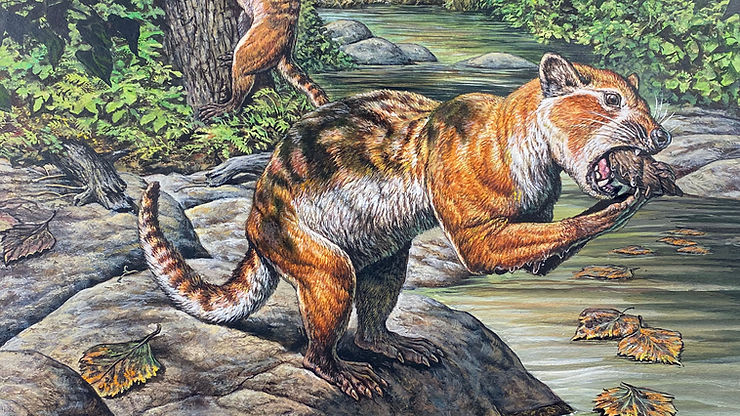By: Ray Zhao
Imagine seeing a cross between a raccoon and a bear. Well, some 30 million years ago, such a creature may have existed.
The fossil of the raccoon-bear, excavated in 1982, is a “fabulous specimen that is just exquisitely preserved,” according to Xiaoming Wang, who works as a paleontologist at the Natural History Museum of Los Angeles County. The Eoarctos vorax, as it was dubbed, is closely related to dogs and other arctoids, which are carnivores like skunks, weasels, and racoons.
The two-foot-long fossil yields many clues about the Eoarctos’ past. With sharp claws, flat feet and small skulls, the skeleton provides a wealth of information into the evolution of early carnivores.
Dr. Wang and his team examined it, along with five other specimens found around the area, and found that their molars and teeth were crushed. He suspects that Eoarctos munched on mollusks present 30 million years ago and crushed their shells like otters do today.
However, the damage in the skull may have not been from mollusk shells. Blaire Van Valkenburgh, a vertebrate paleontologist at the UCLA, who was not part of the study, noted that eating fruit with hard pits could have caused the damage.
However, there is a lot of scientific importance to the method of eating, as different methods denote different evolution periods and animal types. Eoarctos most likely chomped on hard foods, which paleontologists consider to be a specialized form of consuming food. At the time of the Eoarctos, mammals were only starting to fill the holes dinosaurs had left, so this may have been a very early example of such behaviors.
Ultimately, eating may have killed this animal. A double jaw injury and a blood infection likely doomed the original Eoarctos that paleontologists found. However, the weeks of suffering it probably went through have helped science gain a better footing on what early mammals were like.
“He certainly made a huge contribution to science,” Dr. Wang said.











